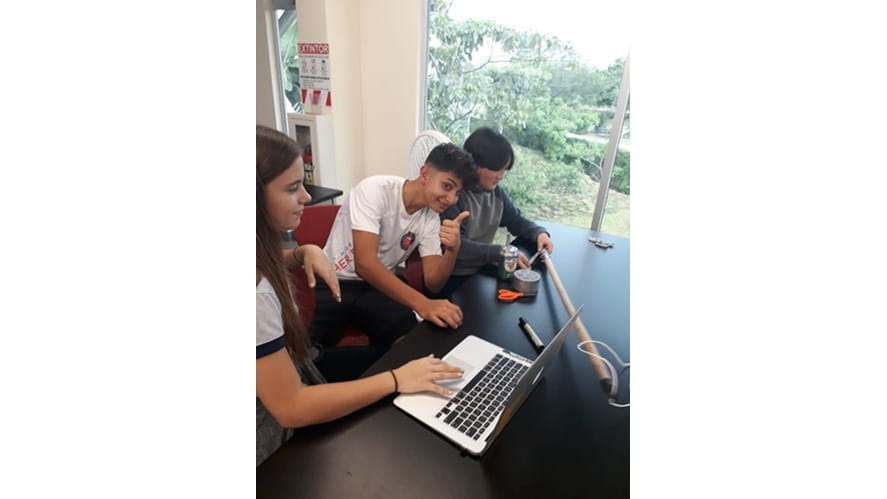Middle-School Mindfulness Action Research
Any school’s first priority should be developing the knowledge and skills to better understand the world today and be successful in the future. We have an obligation to pay attention to best practices from the learning sciences. As well as academics people also care about how happy their kids are. Wellbeing and the so-called ¨soft-skills¨ that will help students be successful now and in the future are increasing in importance and profile. How can schools ensure they are developing academically successful students and healthy, happy students who have confidence in themselves? This year we have attempted to revitalise our advisory program to consider the “whole child”, placing particular emphasis on student wellbeing. Monday’s have been dedicated to "happiness" and students have written gratitude journals and engaged in random acts of kindness. To complement this, in the third quarter students all engaged in a two-minute mindfulness meditation every day.
Action research is defined by the association for supervision and curriculum development as a “disciplined process of enquiry conducted by and for those taking the action. The primary reason for engaging in action research is to assist the school in improving his or her actions.” We adopted an “action-research” approach when we implemented this mindfulness intervention and this blog gives a brief overview of the results. It's far from an academic study! We have limited resources and need to work with what we have but it's always important to see whether the actions we are pursuing have the impact we want them to! The data and questions are available to anyone who would like to see them.
The intervention was quite straightforward, for one quarter all students were expected to participate in two-minute mindfulness meditations every day during their advisory time for around two months. Teachers had three one-hour professional development sessions on mindfulness to enable them to talk about the benefits and guide students in their practice. The mindfulness meditation involved students sitting in silence and using their breath to anchor their attention. When their mind wandered, they brought their attention back to their breath. The intention was that this happened every day from January 15th to 14th of March, so a total of 50 sessions approx. We can expect that there would be different periods of interruptions during this time.
To begin with, we set out to use questions that mental health charities and mindfulness organisations use to measure the impact on students. We ended up combining some questions from different organisations relating to those things we considered most important. These questions related to what we hope students would get out of the practice:
-
I can focus my attention on what I want without being distracted
-
I’m aware of what I am thinking and feeling
-
I worry a lot about things that will happen in the future or have happened in the past
-
I use positive self-talk
-
Sometimes I feel like I am running on Auto-Pilot
For each question, students needed to answer using a 1 - 5 scale with one being the “lowest” and 5 being the “highest”. Below we show the average results from the pre-survey:

The lowest value is associated with students ability to "live in the moment" without worrying about the future and the past. Worrying is associated with anxiety. Students ranked themselves most highly for "self-awareness", they say they know themselves well and aware of what they are thinking and feeling.
Below are the results showing the change after the intervention.

As you can see, if we look at these figures it seems like doing the mindfulness intervention actually reduces students ability to focus, be aware, demonstrate positive self-talk and avoid auto-pilot with only a small and insignificant increase in worrying about the future! We had been expecting there to be some increase after the intervention. However, remember the question about how seriously students had taken the intervention? 13.5% of students expressed that they never took the practice seriously.

What happens to the figures if we consider only those students who said they took the practice “sometimes” or “always” seriously?

When we exclude those who didn’t take the practice seriously we are left with some reasonably significant results. They show a 4% increase in focusing attention and running on auto-pilot with a 15% increase in reducing worrying about past and future events. Given that stress and generalised anxiety is associated with the inability to control events or feeling that life is "out of control" this encourages me to think that mindfulness offers a good option to help students deal with anxiety. We need to be cautious of course, the data is interesting but this is a school-based study without a control group and there were many factors to consider including the time of day at the quality of the number of sessions each group went through. There is also the confounding factor of the group who didn't take the intervention seriously.
We also need to consider whether those who said they never took it seriously significantly skewed the measures down as they had a strong dislike of the experience. When we look at the pre-survey there are no children who put themselves as a “1” on all the measures however on the post-survey there were three. These are the same students who considered that they "never" took the experience seriously.
Some cautious conclusions:
1) There is a need to get students to take the practice seriously in order to get a true picture of the impact. When they take it seriously there is potential for positive change.
2) More specificity in terms of how seriously students took the experience would improve the data.
3) Tracking individuals would improve the data although the lack of anonymity could change the results.
4) There is potential for mindfulness to help students worry less and increase their ability to focus attention, in particular.







